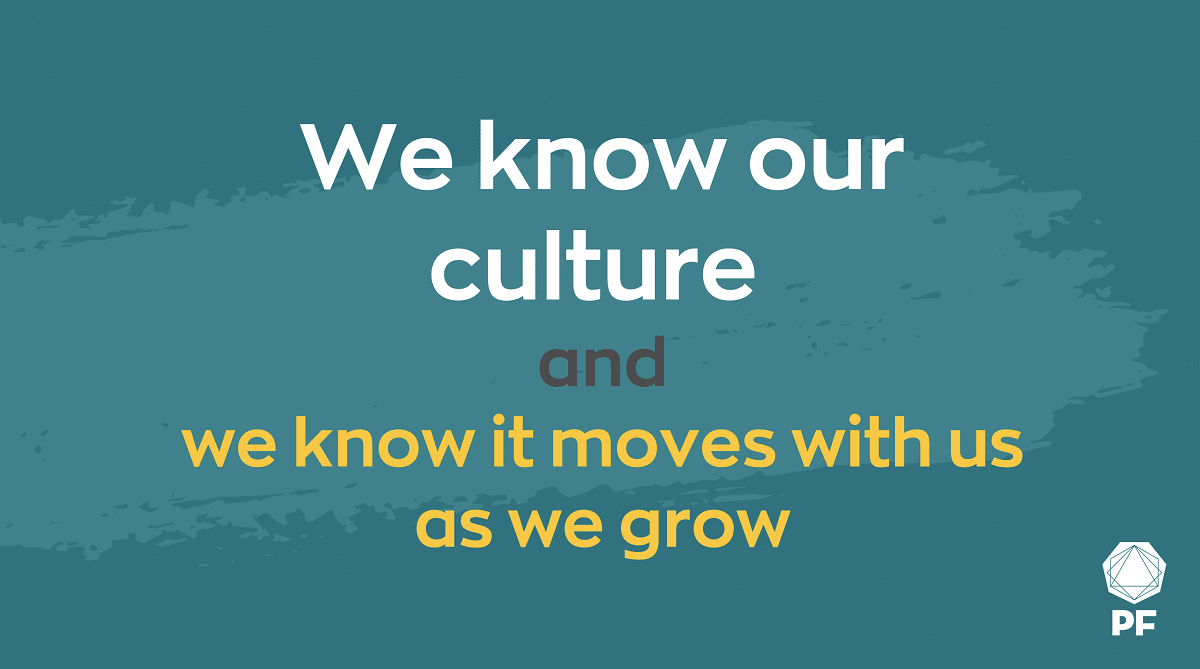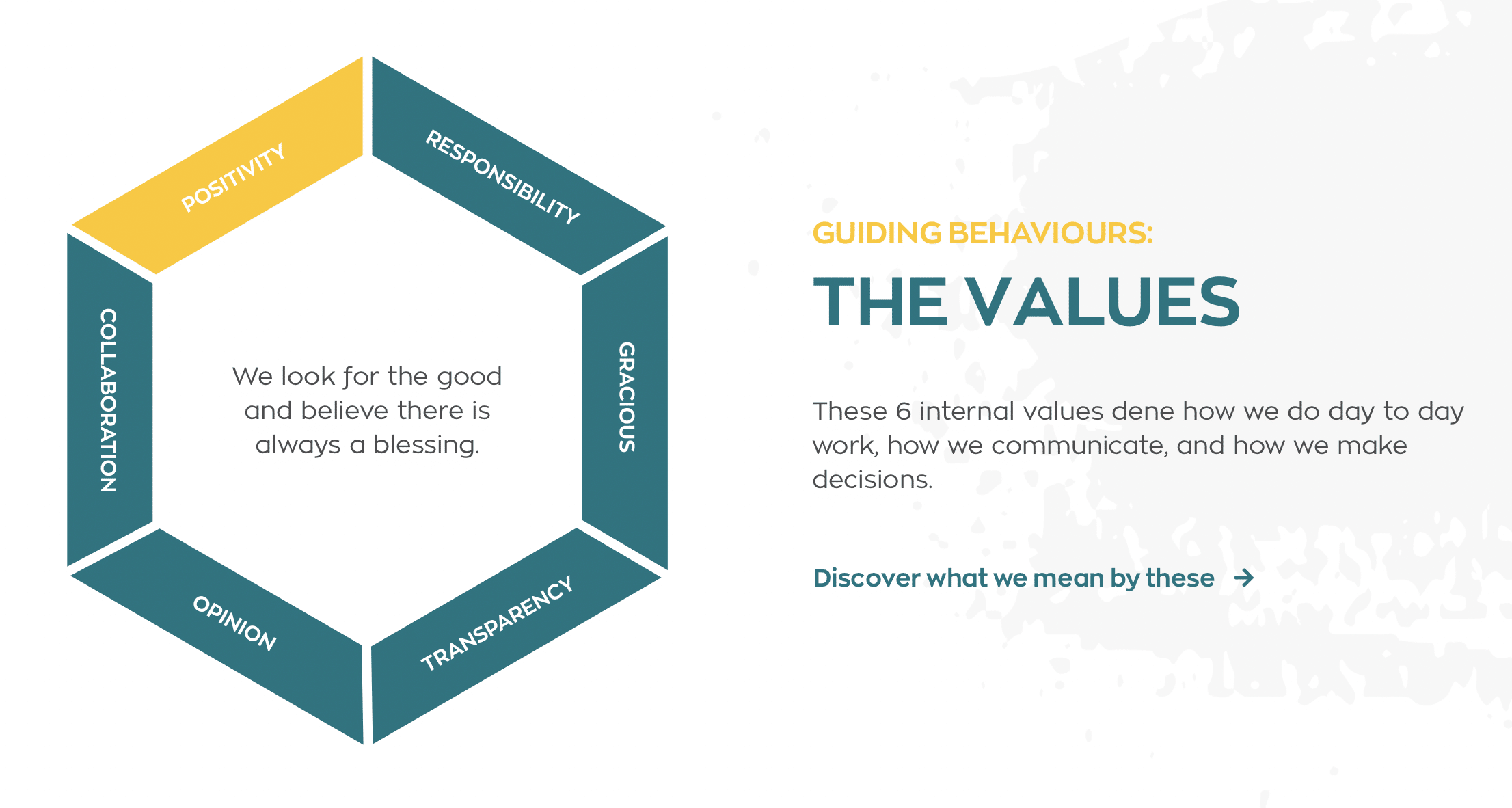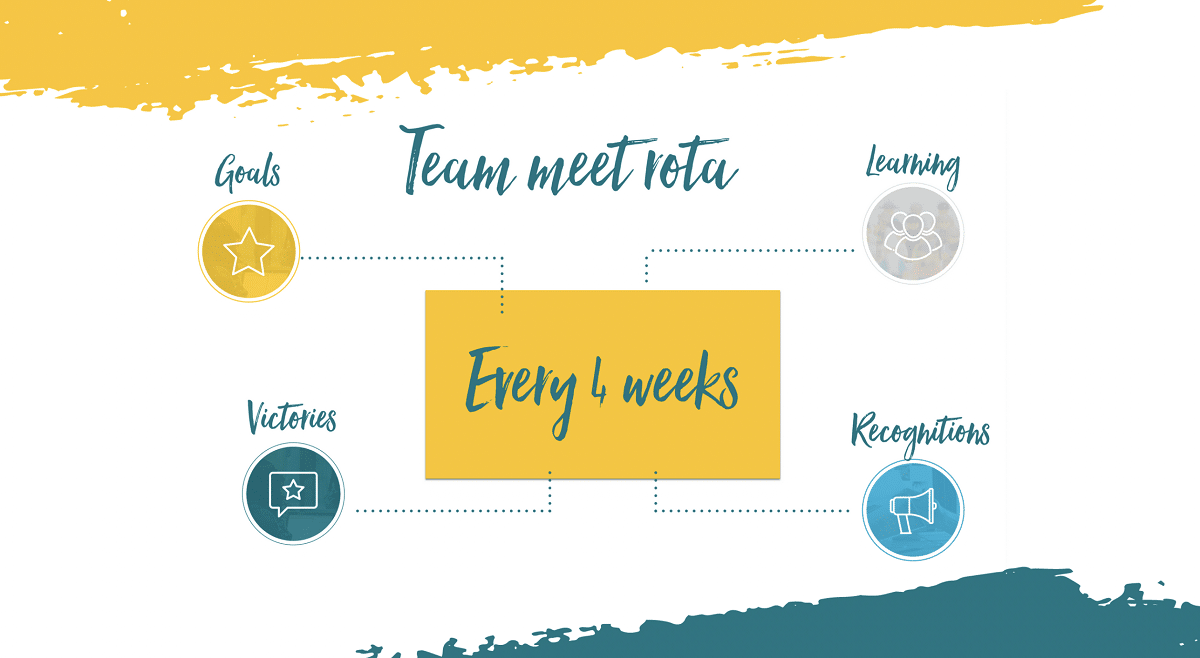
As the leader of an accounting firm you are responsible for your brand. How you and your team feel about the brand is a reflection of you and the way you set expectations. For yourself, your team and your clients.
With your brand you make a promise to your clients. To deliver a service in a particular way. You set standards for your business and the service you deliver. Your clients expect things to be the same every time they interact with your business. They expect everything you’ve promised on your website and in your social posts to be the way things actually are.
Sometimes, when you’re thinking about your brand, you realise something is not lining up. You understand the importance of brand but you’re wondering how you are living it out, or what that even means. You may even go as far as to say you feel like your brand is a lie. This sounds harsh, but one of our accountants expressed this recently after going through a rebrand and struggling to get their team to adapt to the change.
When this happens, it’s time to dig deeper into why you feel this way and figure out what you can do about it.
Identify the brand disconnect: is it even the right brand?
If you are feeling a disconnection, break down the reasons why. There’s a big question you need to ask yourself: is your existing brand the right one for your firm?
There are many things combining together to make you feel this way. Before investing time and money into a new brand based on a gut feeling, consider these questions:
Where is the lack of connection with your brand?
Break down the reasons for the disconnection. Are you and/or the team lacking motivation for the work, the people you serve? Is there a lack of motivation within yourself, or does it feel like the team don’t feel invested in the business? It’s possible you’re the only one who really understands the mission of the firm and your ideal client. It’s also possible you feel like you’re the only one who understands, but actually there’s a difference of opinion about the type of businesses you serve and the work you do.
How was the current brand developed?
In the first few years of business, you needed something to get started: a logo, a name, some colours. That worked for a time. But the disconnection you’re feeling now is helping you realise a brand is far more than a logo and a name. It could be your original brand is no longer reflective of the story and meaning behind your business. You’re clearer now on your mission, values, culture you have or want to build. To create a successful brand you need to be clear on these foundational elements so that they can be pulled into your brand identity and the team know how to represent the brand. For more on this clear approach to branding, visit this page.
What is your understanding of brand?
Brand is more than your logo and how you represent your firm visually. Your brand is made up of many things that you can’t see. The emotions, how people feel about you, “what they say about you when you’re not in the room” as Jeff Bezos put it. Your brand is not something that is done when you get the files from the designer and update your site and socials. It’s something you need to work on daily with the team in the day to day of the business while you interact with clients and deliver your service.
You could be coming to the conclusion that it’s NOT the right brand for where your firm is now. Before making any rebrand decisions you’ll want help from a brand expert. If you don’t do the work required and just pick a new brand identity you like better or which has a more “professional” feel, you’ll very quickly find yourself back where you are right now. Feeling like something isn’t right. The first step is a foundations workshop. Going through these five sessions will help you realise who you are now (and how that’s different from who you were), and know what changes need to be made to your brand, website and marketing plan.
What if you’re confident the brand you have IS the right one?
You may have recently gone through a rebrand with PF or another agency but still feel like something isn’t clicking. It can feel scary stepping up to the challenge. And that’s okay.
Your brand is in existence and it’s also aspirational. You constantly strive to deliver on the brand you are and the brand you want to be. At the moment you might be feeling like you’re falling short of the promises you made.
You may relate to some of these issues below. The good news is marketing can help you with all of these!
How to live out your brand
1. Be consistent with the delivery
As I mentioned in the introduction, you make a promise to your clients with your brand. What you represent on your website, social media and all other marketing must also be what clients will actually receive from you.
It’s not just about winning the trust of prospects and getting a new client. It’s about keeping them for years to come. Marketing to the right clients for your firm is a long game. It can take up to 3 years to convert a prospect. Retaining a client is much easier than winning new ones which is why brand consistency is so important.
“Marketing is the equivalent of asking someone on a date. Branding is the reason they say yes.” – Ren Jones
The visual identity must be consistent, and the imagery you use needs to reflect the brand. It is equally important the language you use on your website, blogs, social media, mirror how you and your team actually communicate in person, on the phone, in email.
Saying you’re a modern tech focused accountancy firm is one thing; using very formal traditional language or using outdated systems doesn’t match up. When there’s a disconnect, trust is broken.
Take time to establish your firm’s tone of voice and ensure everyone on the team has the tools they need to deliver. To help you figure out what your firm’s tone of voice is, read What actually is a tone of voice? How do I figure out what my firm’s voice is?
Once you have your tone of voice defined, make sure this is included in your brand guidelines so everything relating to the delivery of your brand is in the one document. Why bother creating brand guidelines for your accounting firm? will help explain the importance of brand guidelines and what’s included.
2. Show don’t tell – lead by example
As a leader in your accounting firm, you are responsible for your brand. You are also responsible for the people in your business and making sure that you build and grow a culture that enables the team to deliver the promise you make with your brand and deliver on that consistently.
As a leader crafting the culture is THE most important job and it has to be worked on every day.
At PF, when a new team member joins, one of the first meetings the new person has is with our owner Karen. Together they go through the PF Culture deck and begin to understand all things PF. The culture deck includes:
- Our pillars and values and what they mean
- How we live out our values
- The history of PF
- The team and how it’s set up
- Our clients’ journey and how we help them in it
- How we help each other internally
- Words and phrases we use with clients
- Assets to help us communicate with clients
This meeting sets the tone and expectations of the culture at PF, and begins the culture conversation. One culture deck and one meeting don’t achieve that goal, but the new person knows what they are coming into and what they are going to be called to live by.

Having your firm’s values defined and clearly communicated is also key to growing the culture around the brand.
Show your team you live by your values on a daily basis. Hire by them, fire by them, measure clients by them and make decisions based on them.
Show you communicate and handle clients in the same way every time, and how you follow the processes you’ve put in place for the team to follow. Show you hold yourself to the same standards you hold them to.
3. Get buy in from the team
Responsibility for delivery of the brand falls on the entire team. Every team member plays a role and therefore the brand needs to be lived out by the whole team.
At first this will be challenging, particularly if you have an existing team that has been around a while. They are used to things being a certain way and change is more exciting for some people than others. But stick with it. Be consistent, encourage them and be transparent about what you find hard. Show the team you are united (or it’s your goal to help you be).
One of our core values at PF is positivity. Over the past few years there have been days when this has been very difficult. We still encourage each other to find the positive in even the hard things. And on the days where we struggle to find it we are transparent about it, because transparency is another of our core values. We’re human. Seeing the positive can be a struggle. But we come back the next day (or the next hour) and try again. This is also why the values need to work together. Positivity doesn’t stand alone, and having an opinion stand alone, and graciousness stand alone. The PF team member – and client! – is someone who keeps a positive outlook whilst having an opinion and sharing it graciously and transparently, working collaboratively with the rest of the team and taking responsibility where needed. Those are our six guiding behaviours and they’re explained in more detail on our Values page.
Be conscious of the power of shared feeling/culture among your team (in both a negative and positive way). Pay attention to patterns and habits being created and take action (i.e. either encourage, support and introduce it to your culture, or explain why it’s not a part of the culture)
Some mid size or larger firms with different departments might want to have a culture team who are responsible for making sure that the culture is felt internally and externally.
Whether you’ve rebranded recently and are trying to launch the brand internally or are looking for ways to get more investment from the team How to launch a new brand internally in your accounting firm has some great practical tips to get you started.
4. Make sure brand values are felt across the team
Values are not just words to decorate your office or post on your website. They are the core of your firm. They’re what set you apart from every other accounting firm and they back up why you do things the way you do.

A good place to start is to recognise team members for living out your firm’s values. This could look like having a recognition wall in the office. Sending cards to show your appreciation in how they dealt with a client situation and lived into the firm’s values. At PF we have a “Kind words” slack channel where we share stories about team members and clients living up to the PF values.
We also hold each other accountable by having one team meet a month dedicated to recognising other team members and clients for living out the PF values and pillars.

Encourage decision making around your values in all aspects of the business. Have the team think about individual choices and behaviour and how they interact with clients. Use your values to qualifying a new prospect and help you decide when it’s time to disengaging difficult clients. When you start to do this it becomes a habit and a natural part of the brand and firm’s culture.
If you’re making a shift to adopt this in your business you might meet some resistance. You have to be firm and make it clear this is not optional. Involve the team in discussion around your values and if you’re yet to define your values make the team part of the process. You can read more on the importance of involving your team in your values in How to run a values session with your team.
5. Put your brand at the forefront of your hiring and people management
Make your values an integral part of your hiring process. Having a team aligned with your brand and its mission is crucial. When you have a team you trust as the caretakers of the brand everything runs smoothly and you don’t feel like your the only one living out the brand.
Hire those who already share the same values. It makes getting people on board and bought into the culture a lot easier. It’s part of who they already are. The more like minded people you have on the team the easier it becomes to identify the “bad apples” that are bringing the motivation of the rest of the team down and negatively impacting the firm’s culture.
For a retreat last year the PF team read No Rules Rules – a book about Netflix culture and reinvention. In the early 2000’s Netflix were forced to lay off staff. Keeping 70% of their highest performing employees. When making the decisions about who to let go and who to keep, there were many team members who were borderline. They found when letting the lower performing employees go, those who were borderline, stepped up and adapted to the change and output was the same if not better. In other words when they let the “bad apples” go the overall team performance improved. “Suddenly we were doing far more work with 30% fewer employees”.
The easiest way to deal with resistance is only to hire those who already align with your values. It’s your responsibility to set the expectations for the team you have and call them out for not meeting expectations. Be consistent, give them opportunities to adjust their behaviour. By showing that the changes you are making are not optional, you’ll eventually get the majority of full team participation.
For those who don’t show willingness to meet the expectations of the brand, you have decisions to make. Do you continue to have people on your team who negatively impact the culture you are working hard to build or do you have the “this is not the place for you” conversation?
In some cases you might not have a “bad apple” situation. You might be trying to get the team involved in marketing or even get them to do something that is now part of the way you do things in your firm. This could be resistance to follow a process or objecting to having their photos taken for the website. You might be hearing “that’s not my job”. This is a fair argument. You’re changing the responsibilities of their role. If you’re faced with this, take ownership for the poor communication on your part. Be clear with the team on what the new expectations are, the reason behind them and how this will benefit them in the long run.
Again, consistency is key here. It’s your responsibility to set the expectations and follow through and have the hard conversations when required. You can start small and safe with this by starting with performance reviews and possible incentives to make it clear what the expectations are.
Conclusion
Most business owners have felt some misalignment with their brand at one time or another. It’s part of the development of any business. In some cases it could be time for a rebrand. In other cases it’s a sign something is awry internally. When you get this feeling, listen. Take the time to think, process and explore why you feel that way in order to understand what really needs to change.
It could mean a rebrand. It could also be you, as the leader, need to spend more time on building the brand culture to make sure your team is living out your brand every single day. Take responsibility and hold yourself accountable. As the owner and leader you’re responsible for your brand and your team. You’re not alone in developing a culture that brings your brand to life. Share the process with the team. Talk to them and build the culture together so that they are on board and feel invested in the business and the delivery of the brand comes naturally.

